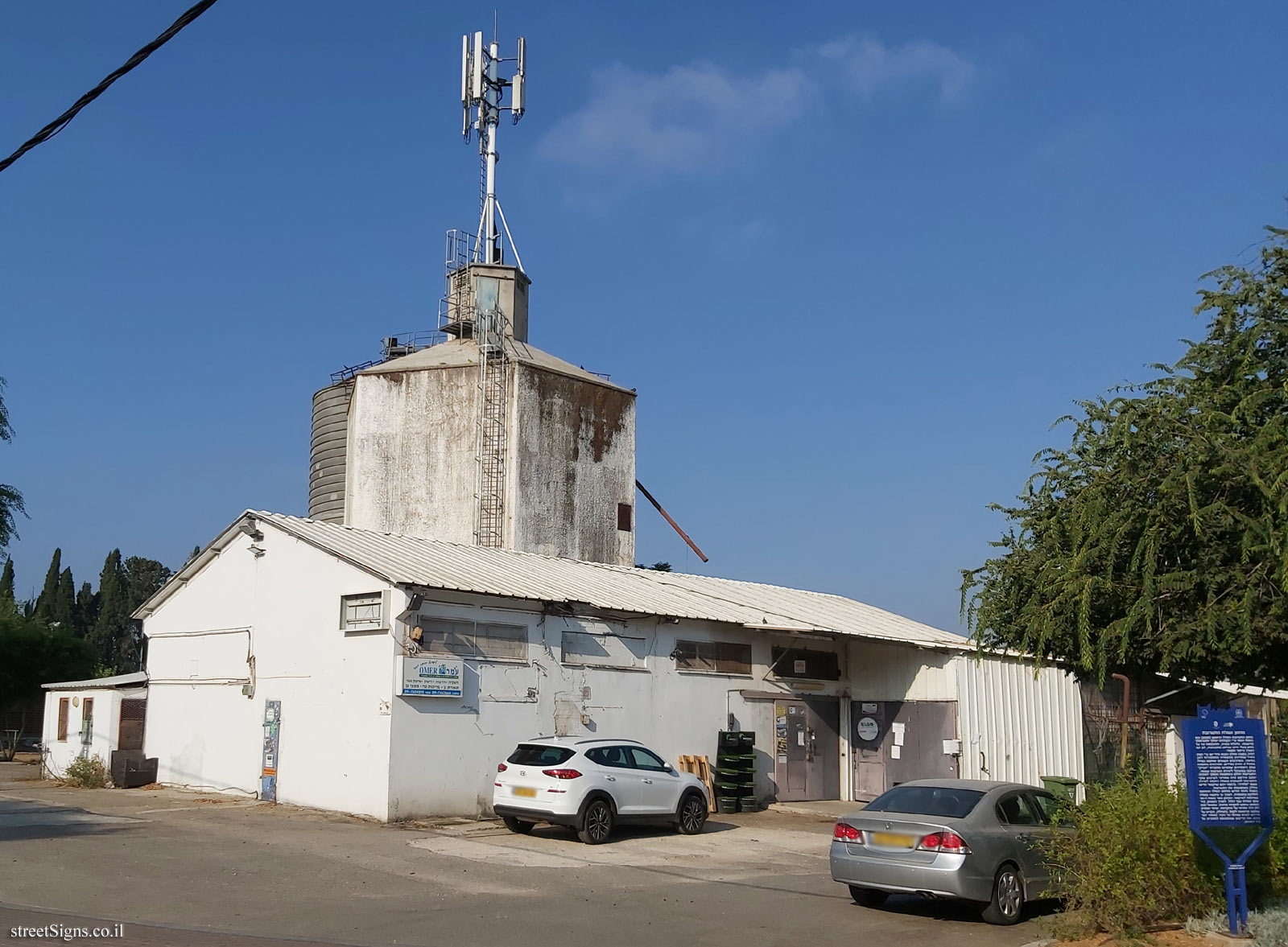The sign shape is square but its head is designed according to the silhouette of the old building of the Gymnasia Herzliya, which serves as a logo of the Council for the Preservation of Heritage Sites in Israel
The warehouse and silo were photographed that day
 Click for a larger image
Click for a larger image The mention of the contribution that appears at the bottom of the sign is surprising and unusual in signs of this type.
Translation of the text on the sign:
Symbol of the Council for the Preservation of Israeli Heritage Sites
The emblem of Batzra
The emblem of the Ministry of Culture and Sport
Symbol of a Batzra Cooperative Society
Warehouse and mixing cart The mixture warehouse and the first silo (concrete) were built in 1954 by the contractors Yitzhaki and Stabinski from Raanana.
Dora, coriander and corn were brought daily by driver Meir Shpronetz in a truck from Dagon silos in Haifa. The various ingredients were stored in a silo that contained 6 separate compartments. The ingredients with the addition of oil and vitamins that came from the "Avik" company were mixed in a mixer to create different mixtures. The mixtures were distributed using a bag funnel. Jacob First was responsible for transporting the bags of the mixture to the farms in a mule-drawn cart called "Flora." In 1967 he purchased a modern tractor and used it to distribute the mixture.
In 1975, the silo complex was renovated and adjusted for distribution in bulk. For this purpose, a container attached to a tractor was purchased. The warehouse was closed in the 90s due to the closure of the poultry industry. Over the years, the warehouse wall has been used for movie screenings. Emanuel (Mano) Rosen was in charge of the screenings. Boxes of oranges were used as chairs for the audience. Initially, the projections were on white sheets hung on the wall. Later they painted the square that hung as a souvenir on the warehouse wall.
Donation from the First, Rosen and Spronz families

 Click for a larger image
Click for a larger image